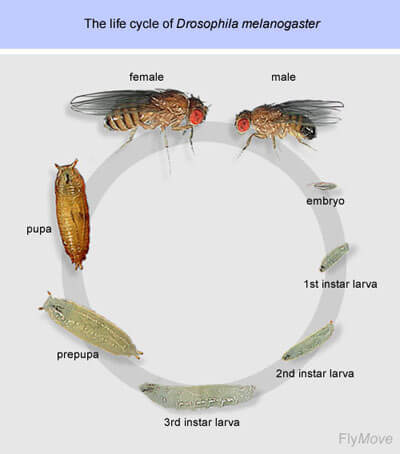How do humans and animals grow limbs that are exactly the right size for their bodies? How do the developing embryos maintain correct proportions between the gradually growing organs?

How do humans and animals grow limbs that are exactly the right size for their bodies? How do the developing embryos maintain correct proportions between the gradually growing organs? Scientists at the Weizmann Institute of Science recently took an important step towards understanding how scale is maintained, that is, how the various developmental patterns manage to maintain synchronization with the overall size of an embryo, or of a growing and developing living being. In a recently published study in the scientific journal Current Biology, succeeded Prof. Naama Barkai וProf. Benny Shiloh And research student Dani Ben Zvi from the Department of Molecular Genetics explains that the scale is preserved in the wings of the fruit fly - which are covered in a branched and complex network of veins. Their findings may be relevant for many developmental processes, including human embryonic development.
The scientists knew that the mechanism that controls the taking of the shape of the embryo is based on a single substance that transmits these messages - called a morphogen. The morphogen is secreted from several cells in the center of the developing embryo, and from there it pulsates outward, while its concentration decreases. In this way, it is the concentration of the morphogen that "informs" the developing cells about their relative position and the role they will play in the developing creature. However, since the morphogen is secreted at a uniform rate in both small and large organisms, it cannot alone determine the scale. A few years ago, scientists managed to find the factor that affects the size dimension. In an experiment done on frog embryos, they discovered a substance that forms at the edges of the embryo and pulsates inward. It is its distribution in the cells that determines the signal that each of them receives, in a way that also takes into account the size of the embryo.
Later, the scientists created a theoretical model, according to which the substance formed at the edges of the embryo - called an expanding substance - helps in the distribution of the morphogen. The morphogen, for its part, functions as an inhibitory substance, because it stops the production of the expanding substance at the end of the embryo. The model accurately described how the interplay between the expander and the morphogen determines the scale adjustment in the embryo.
In the current study, the scientists tested the validity of the model they created through a series of experiments, which followed the development of the wings of fruit fly larvae. A morphogen called Dpp works in clusters of cells that are a kind of "preparation for wings". In addition, recent studies have shown that the substance called "Pentagon" plays a role in the development of the vein network in the fly's wings, which raised the suspicion that it functions as an expanding substance.
The scientists collected fruit fly larvae of various sizes, and used quantitative methods they developed to measure the distribution of morphogen concentrations. After that, they prevented the formation of the "pentagon" in the developing wing, and repeated the test. The findings showed that in the first case, in which both substances functioned normally, the activity of the morphogen in determining the scale matched the prediction of the model, and that there was a correlation between its signals and the size of the wing. In contrast, in larvae without a pentagon, the morphogen was evenly distributed in all wings tested, regardless of their relative size. In this way, they proved that the pentagon is indeed the expanding substance, and that the model based on the action of an expanding substance and a suppressing substance can indeed be applied to different creatures: frogs and flies.
Prof. Sheila: "The beauty of this research is the way it weaves the theoretical model with the experimental biology. This approach gives us a new and original means of investigating the conservation of scale, according to which, instead of getting lost in the tangle of complex molecular mechanisms, we can begin the search for a relatively simple universal regularity."

One response
Very interesting! We still have so much to learn